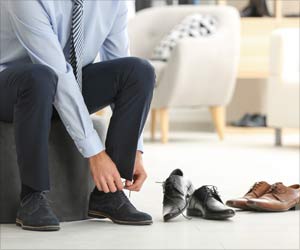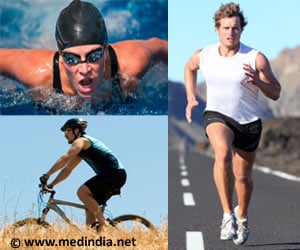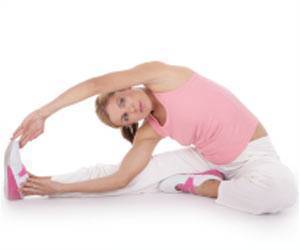Kids should Learn balance themselves with shoes on, as it is helpful in improving their balance and speed while walking and jumping, finds a new study.

‘Learning how to walk with shoes on is important for kids to develop a sense of balance and improve their command over movements.’





The study shows that habitually barefoot children are noticeably better at jumping and balancing compared to habitually shod children, particularly from 6-10 years of age. While these beneficial barefoot effects diminished in older adolescents, the research nevertheless highlights the importance of barefoot exercise for motor development as children grow and mature."Walking barefoot is widely thought to be more natural, and the use of footwear has long been discussed as an influencing factor on foot health and movement pattern development," explains Professor Astrid Zech from the University of Jena, Germany, who led the study.
"A few studies report that barefoot situations change biomechanics in children and adults during running and jumping -- but only limited knowledge exists for the clinical relevance of this finding," she continues. "We wanted to investigate, for the first time, whether changes in foot biomechanics due to barefoot activities are actually relevant for the development of basic motor skills during childhood and adolescence."
Zech, together with two research teams, assessed three motor skills -- balance, standing long jump and a-20 m sprint -- in 810 children and adolescents from 22 primary and secondary schools across rural Western Cape South Africa and urban areas of northern Germany. The two groups were selected to represent different footwear lifestyles: children from South Africa are habitually barefoot, while children from Germany wear shoes most of the time.
The habitually barefoot participants scored significantly higher in the balance and jumping tests compared to the habitually shod participants. This difference was observed in both test conditions (barefoot and shod) and across all age groups (6-10, 11-14 and 15-18 years), but particularly evident in 6-10-year-old children. The habitually barefoot children also performed better when barefoot than when shod.
Advertisement
The results for the sprint test, however, were different. Here the habitually shod children performed better, particularly those in the 11-14 year age group and both groups performed better while shod. The researchers explain that environment - the one factor that could not be standardized across the two study locations - may have influenced this result.
Overall, the researchers' work emphasizes the benefits of barefoot physical activities for motor development.
"Physical education classes, exercise and sports programs, and reactional activities that aim to improve basic motor skills could benefit from including barefoot activities," says Zech. "Parents could also encourage regular barefoot time at home."
Source-Eurekalert










